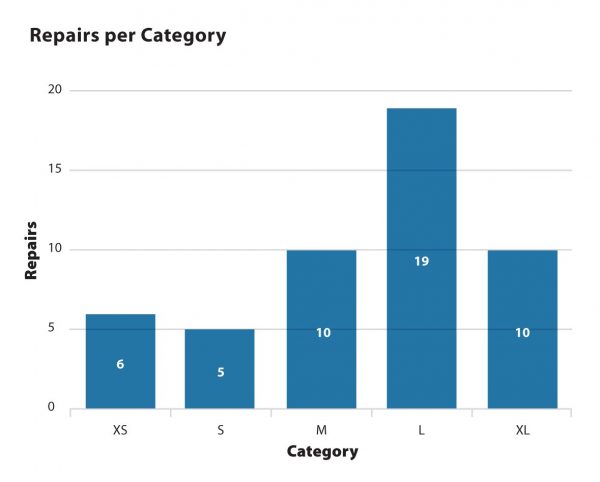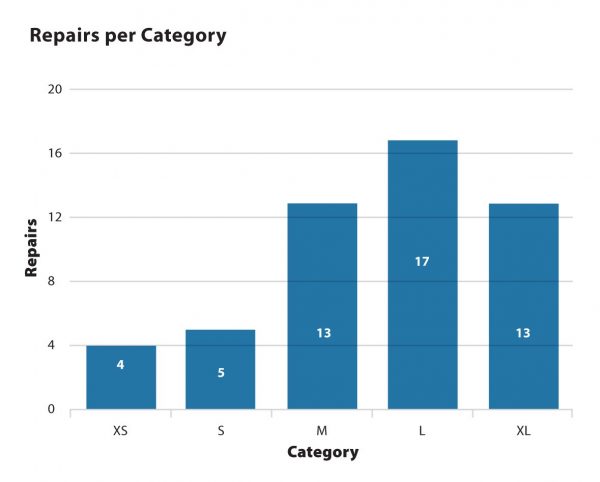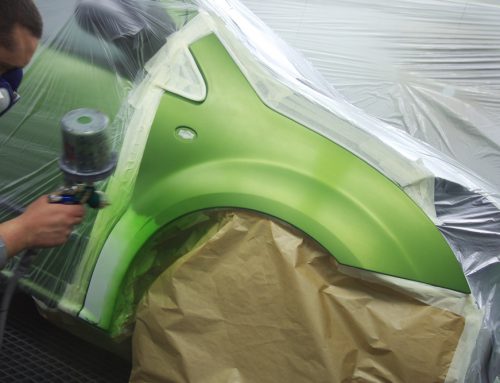Do you live in a place where the winters are harsh, and the summers are beautiful and warm? If so, seasonality will impact your collision shop, which is the case for most Canadian shops.
Having a good severity chart is often one of the most important success factors for improved capacity planning at collision shops.
Generally, people build their chart based on winter, the high season. But once summer sets in, keen production managers will rightfully wonder if their severity chart needs to be adjusted.
Not too long ago, the answer would have been a resounding yes. To remain successful, it was necessary to adjust the severity chart, but technology and the COVID-19 pandemic have brought about two major changes that make the severity gaps less significant than one might think.
First change: weather forecasts are becoming increasingly accurate and are announced earlier and earlier, so schools are closing before the snow even starts to fall. Just a few years ago, the only way to know if schools were closing for the day was by catching the early morning news. Now we can plan.
Second change: telecommuting has become an everyday reality for many industries. This is the gift that the pandemic has left us. If it snows, people will work from home rather than risk commuting.
When a storm is announced on the news, cities will see fewer motorists on the road, which means less unsafe driving and therefore fewer collisions.
Conclusion: things are not the same, it’s a different reality, and the changes needed are more subtle.
Here are examples of job sizes received in 2022 by a collision shop where the winter is harsh.
- January 2022
- May 2022
You will notice that there is not a big difference between the two work loads received in terms of severity and quantity. The idea that the workload is heavier in the winter remains in the collective imagination but, this is not really the case. The question is: should we adjust according to the season?
The answer is yes, but not necessarily how you imagine. Here are a few subtleties that may prompt you to plan according to the season.
Geography
Your shop’s location may need to be considered in your planning. For example, if you are in an area where there are many accidents caused by deer crossings in the fall, you will probably need to plan for more L and XL jobs. This involves reviewing your store’s traffic by severity over the past few years to better predict demand in your store.
Vacations
Many workshops choose to close for two weeks to simplify vacation management. But not all shops do this, and there will always be other types of vacations to deal with during the year, such as parental leave or spring breaks.
Seasonal Workers
Here are two typical cases:
- A super efficient retiree comes to work at the shop in the winter to avoid boredom, and then goes back on leave for 6 to 9 months. With the labour shortage, we are seeing more and more cases of retired workers being put to work.
- A student works in the summer to fill in during the vacations and get some experience. He will wash some cars and do the more basic repairs.
In both cases, the workload will need to be adapted to include these employees with an expertise that will either propel or limit productivity. We need to be very aware of what our team members can offer to have the best possible planning.
Conclusion
You already have a good severity chart, and you are concerned about maintaining a high-level operational performance year-round. You need to be sensitive to internal and external changes that alter the work offer or shop capacity and adjust as you go.
ProgiPlanning can address your load by severity and by percentage, and help you reach your full potential at any time of the year. If you want to build a good severity chart, but don’t know where to start, you may also be interested in the training program offered by Progi.
—
Redaction: Alexandre Rocheleau
Collaboration: Charles Aubry
Revision: Sophie Larocque
Edition: Émilie Blanchette







